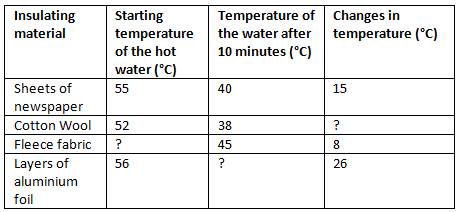Testing Materials | Year 5 Science PDF Download
Choosing Materials
- The qualities a material exhibits to define it and its appropriateness for different purposes.
- It is important to ensure that our experiments are fair, typically achieved by maintaining consistency when comparing different materials to ensure a just evaluation.
Scientific Investigation for Testing Materials
To determine the most effective insulating material for keeping a hot water tank warm, we can conduct the following experiment:
- Take four empty aluminum drink cans.
- Wrap a potential insulating material around each can, such as sheets of newspaper, cotton wool, fleece fabric, or aluminum foil.
- Have an adult pour hot tap water carefully into each can. Measure the initial water temperature in each can using a thermometer and record the data in a results table.
- After 10 minutes, measure the water temperature in each can again and update the results table.
- Determine which can has retained the most heat. This can indicates the best insulating material.

Your results table could resemble the following:

Comparative Tests
When setting up a comparative experiment, it's crucial to maintain certain constants to ensure the validity of the results. Various factors can influence the outcome of the experiment, so it's essential to keep the following aspects consistent across all test trials:
- Same Size Can: Using cans of identical size for each trial.
- Same Amount of Water in Each Can: Ensuring that the quantity of water is equal in all cans.
- Same Starting Temperature of the Water: Starting with water at the same initial temperature for every trial.
- Same Length of Time: Allowing each trial to run for the same duration.
- Same Thickness of Insulating Material: Maintaining uniformity in the thickness of the insulating material used.
Ensuring consistency in the thickness of the insulating material can be particularly challenging. Achieving uniform thickness may require wrapping a specific number of layers of foil or paper around the can to match the insulation provided by materials like cotton wool or fleece. It's important to acknowledge that achieving perfect fairness in an experiment can be extremely difficult, and in some cases, impossible.
|
19 videos|22 docs|6 tests
|















